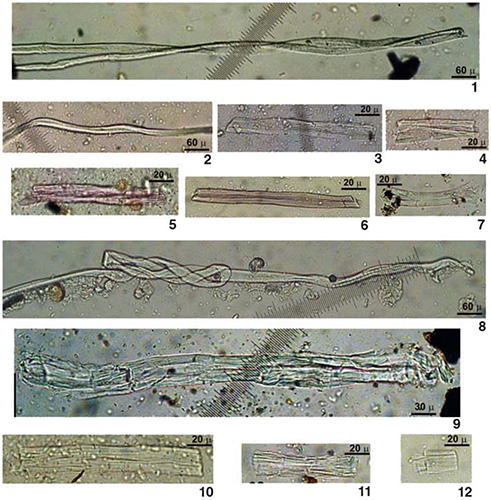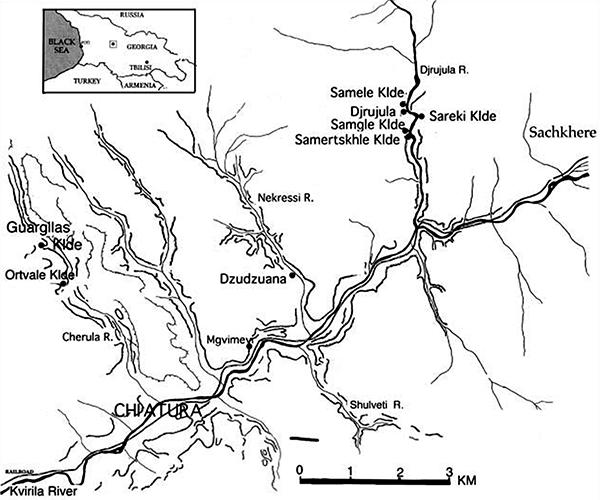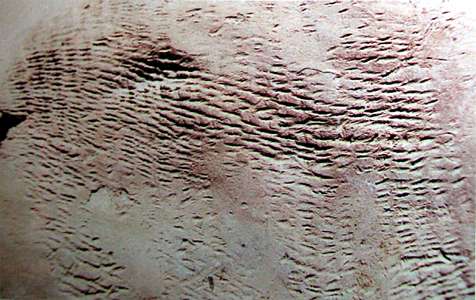Back to Don's Maps
 Back to Archaeological Sites
Back to Archaeological Sites
Palaeolithic Fibres and Textiles
Wild flax fibres have been identified from a series of Upper Paleolithic layers at Dzudzuana Cave, Georgia, indicating that prehistoric hunter-gatherers were making cords for hafting stone tools, weaving baskets, or sewing garments. Other reports of the early use of plant fibres include Dolní Věstonice (Czech Republic) at ~29 000 to 32 000 years ago (probably nettle, Urtica sp.) and unidentified species in Ohalo II (Israel) at ~21 000 BP. A few of the fibers from Dzudzuana Cave are colored and appear to have been dyed. A wide range of natural pigments was available to the Upper Paleolithic occupants of the cave, including roots and other plant parts. The color range includes yellow, red, blue, violet, black, brown, green, and khaki.Text above: Kvavadze et al. (2009)

Dzudzuana Cave twisted and dyed flax fibres
These fibres were from deposits with ages ranging from 32 000 BP to 26 000 BP for the flax fibres in section D, and 28 000 to 24 000 BP for the dyed fibres of unit C.
1 to 7, Fibers from Dzudzuana, Georgia, unit D:
1: twisted flax fibers
2, 3, 4: flax fibers
5, 6, 7: unraveled flax fibers
8 to 12, Fibers from Dzudzuana, unit C:
8, 9: twisted flax fibers
10: flax fibers
11: dyed flax fibers
12: flax fibers
Photo and text: Kvavadze et al. (2009)

Map showing the location of Dzudzuana Cave, Imereti region, Republic of Georgia.
Photo and text: Bar-Oz et al. (2008)

Dexterity of the First Weavers
On a lump of fired clay from the Dolní Věstonice / Pavlov area were found the impressions of substances from plant fibres. The whole process of picking nettles, crushing the dried stem, preparation of tow, spinning the thread and then weaving was tested and shown to be possible using tools of the time by M. Bunatova. Urbanová (ca 1999)
Source: Display, Dolní Věstonice Museum
References
- Bar-Oz G., Belfer-Cohen A., Meshveliani T., Djakeli N., Bar-Yosef O., 2008: Taphonomy and Zooarchaeology of the Upper Palaeolithic Cave of Dzudzuana, Republic of Georgia, Int. J. Osteoarchaeol.,18: 131–151 (2008)
- Kvavadze E., Bar-Yosef O., Belfer-Cohen A., Boaretto E., Jakeli N., Matskevich Z., Meshveliani T., 2009: 30 000-Year-Old Wild Flax Fibers, Science, Vol. 325, 11th September 2009
- Urbanová , K., ca 1999: Textilnictví v prehistorii, http://uprav.ff.cuni.cz/pages/semi/3.prednaska.pdf